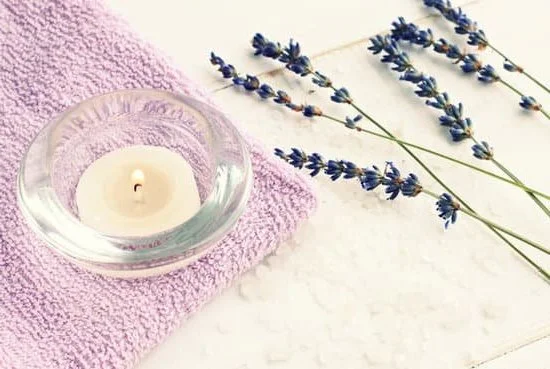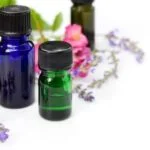Aromatherapy has long been recognized for its calming and therapeutic benefits. The use of scents to enhance well-being dates back thousands of years, and one popular way to incorporate aromatherapy into daily life is through the use of candles. Aromatherapy candles combine the soothing ambiance of candlelight with the healing properties of essential oils, creating a powerful tool for relaxation, stress relief, and mood enhancement.
In this article, we will explore the world of aromatherapy candles and guide you through the process of making your own at home. By understanding the basics of aromatherapy, gathering the necessary supplies, and mastering the art of candle-making, you will be able to create personalized blends that cater specifically to your needs or preferences.
The advantages of making your own aromatherapy candles extend beyond simply enjoying a pleasant scent. Creating your own candles allows you to control every aspect of the process, from selecting high-quality ingredients to customizing scents for specific purposes. Plus, crafting your own aromatic creations can be a fulfilling and rewarding experience. So let’s dive in and discover just how easy it is to harness the power of aromatherapy in candle form.
The Basics of Aromatherapy
Aromatherapy is a holistic healing practice that uses natural plant extracts, known as essential oils, to promote physical and psychological well-being. The scents of these essential oils have been found to have various effects on the human body and mind. Understanding the different scents and their specific effects is essential when making aromatherapy candles.
Each essential oil has its own unique scent profile and therapeutic properties. Some common scents used in aromatherapy include lavender for relaxation, eucalyptus for respiratory support, and citrus oils for mood enhancement. It’s important to consider your needs or preferences when choosing the right scent for your aromatherapy candle.
To further understand the scents used in aromatherapy, here are some examples of their effects:
- Relaxation: Lavender, chamomile, and sandalwood are known for their calming properties. These scents can help relax both the body and mind, making them perfect for creating a serene atmosphere in your home.
- Stress relief: Essential oils such as bergamot, ylang-ylang, and clary sage are often used to alleviate stress and anxiety. These scents can help bring about a sense of calmness and ease tension.
- Focus and concentration: If you need a mental boost or want to improve concentration during work or study sessions, scents like rosemary, peppermint, and lemon can be effective choices.
By understanding the effects of different scents used in aromatherapy, you can create personalized combinations that cater to your specific needs or goals. Experimenting with various essential oil blends will allow you to discover which scents work best for you.
When making your own aromatherapy candles at home, it’s important to remember that essential oils should be added in appropriate proportions to ensure safety and effectiveness. Start by using a small amount of each selected oil until you achieve your desired scent strength. Be mindful of any sensitivities or allergies you may have, and consider consulting with a professional aromatherapist if needed.
Gathering Supplies
Making your own aromatherapy candles is a rewarding and enjoyable process that begins with gathering the necessary supplies. Before you embark on your candle-making journey, it’s important to ensure you have everything you need to create beautiful and fragrant candles. Here is a detailed list of essential supplies required for making aromatherapy candles:
- Wax: The first thing you will need is wax, which serves as the base for your candles. There are different types of wax available, such as soy wax, beeswax, and paraffin wax. Each type has its own characteristics and benefits, so choose the one that suits your preferences and needs.
- Essential Oils: Essential oils are the key ingredients that give aromatherapy candles their therapeutic properties and unique scents. Choose high-quality essential oils in fragrances that align with your desired effects or mood enhancement.
- Fragrance Oils (optional): In addition to essential oils, you may also choose to add fragrance oils to enhance the scent profile of your candles. While not as natural as essential oils, fragrance oils offer a wide range of aromatic options.
- Wick: Selecting the right wick is crucial for proper burning and scent diffusion in your aromatherapy candles. Cotton or hemp wicks are commonly used for candle making because they provide a clean burn.
- Containers or Molds: You’ll need containers or molds to pour your melted wax into while it solidifies into a candle shape. Glass jars, tins, ceramic vessels, or silicone molds can all be suitable options depending on your preference.
- Thermometer: A thermometer is an important tool for monitoring the temperature of the melted wax during the candle-making process. This ensures that the wax doesn’t get too hot or cool too quickly.
- Double Boiler or Melting Pot: To melt the wax properly and safely, you will need either a double boiler setup or a melting pot specifically designed for candle making. Avoid using direct heat sources to prevent accidents or uneven melting.
- Stirring Utensils: Have a designated set of stainless steel or heat-resistant utensils, such as a spoon or spatula, for stirring and mixing the wax and essential oils.
- Labels and Packaging: To add a finishing touch to your homemade aromatherapy candles, consider labeling them with their scent profiles and therapeutic benefits. Additionally, think about how you will package or present your candles as gifts or for personal use.
When gathering supplies, it’s important to source high-quality ingredients and materials. Look for reputable suppliers that specialize in candle-making supplies and offer products specifically meant for aromatherapy candles. This ensures that you create candles that not only smell amazing but also provide the desired therapeutic effects. With all the necessary supplies at hand, you are ready to move on to the next step in creating your own customized aromatherapy candles.
Selecting the Right Wax
When it comes to making your own aromatherapy candles, one of the most important decisions you’ll need to make is selecting the right wax as the base for your candles. The type of wax you choose will not only affect the burning time and quality of your candles but also play a significant role in how effectively the fragrance is released.
Overview of Different Wax Options
There are several types of wax that can be used for candle-making, each with its own unique characteristics. Here are some common options:
- Soy Wax: This natural wax is derived from soybean oil and has gained popularity in recent years due to its eco-friendly nature. Soy wax burns cleanly, has a longer burning time, and produces minimal soot or smoke. It also holds fragrance well, making it a popular choice for aromatherapy candles.
- Beeswax: Beeswax is another natural option that offers a subtle honey-like scent when burned. It burns slowly and emits negative ions, which can help purify the air. While more expensive than other waxes, beeswax is known for its excellent burn quality and long-lasting performance.
- Paraffin Wax: Paraffin wax is derived from petroleum and is widely used in commercial candle production due to its affordability and versatility. It provides a strong scent throw and bright flame but may release some soot when burned.
- Coconut Wax: Made from coconut oil, this wax has a creamy white appearance and excellent scent retention capabilities. Coconut wax has a clean burn with minimal smoke or soot production.
Choosing the Right Wax for Aromatherapy Candles
When choosing the right wax for your aromatherapy candles, consider factors such as your personal preferences, desired burn time, fragrance throw, and environmental impact. If you prefer natural options with clean combustion properties, soy or beeswax would be ideal choices. On the other hand, if you’re looking for a more affordable option or prefer strong fragrance throw, paraffin wax may be more suitable.
It’s important to note that some waxes may require additives or additional techniques to achieve the best results. For example, soy wax may benefit from the addition of a small percentage of other waxes like beeswax to improve its burn performance.
By selecting the right wax as the base for your aromatherapy candles, you’ll ensure that you create high-quality candles that not only unleash delightful scents but also burn efficiently and cleanly, enhancing your overall aromatherapy experience.
Mixing and Matching Essential Oils
Aromatherapy candles are a popular choice for those seeking relaxation, stress relief, or mood enhancement. One of the key aspects in creating these candles is the careful selection and combination of essential oils. Essential oils not only provide fragrance but also have specific therapeutic properties that can enhance the desired effect of the candle. In this section, we will delve into the art of mixing and matching essential oils to create the perfect aromatherapy blend.
Understanding Essential Oils and Their Properties
Before diving into the process of creating your own aromatherapy blend, it’s important to understand the properties of different essential oils. Each oil has its own unique fragrance and therapeutic benefits. For example, lavender essential oil is known for its calming and soothing effects, making it ideal for relaxation candles. On the other hand, citrus oils like lemon or orange have uplifting and energizing properties, which are great for boosting mood or focus.
Selecting Essential Oils for Your Desired Scent Profile
When selecting essential oils for your aromatherapy blend, consider both their therapeutic benefits and how their scents will work together harmoniously. Experimenting with different combinations is part of the fun in creating your personalized scent profile. Start by choosing a base note – such as sandalwood or vanilla – which provides a deep, long-lasting aroma.
Then add middle notes that balance and enhance the base note, such as floral scents like rose or ylang-ylang. Finally, include top notes like citrus or peppermint that provide a fresh, invigorating element to your blend.
Recommended Aromatherapy Blends for Specific Purposes
Depending on your desired effect or purpose for using aromatherapy candles, certain blends may be more effective than others. For relaxation and stress relief, try combining lavender with chamomile or bergamot. To promote focus and concentration, consider a blend of rosemary and lemon. For an invigorating scent to boost energy or improve mood, try mixing grapefruit with eucalyptus. There are countless possibilities for creativity and customization when it comes to aromatherapy blends.
Overall, pairing the right essential oils in your aromatherapy candles can elevate your overall experience and enhance the therapeutic benefits. Take the time to explore different scents and combinations to create a personalized blend that suits your preferences and needs. With some experimentation and creativity, you’ll be able to enjoy the perfect aromatherapy candle that helps you relax, destress, or create the ambiance you desire.
Preparing the Candle
Making aromatherapy candles involves not only choosing the right scents and wax, but also selecting the appropriate wicks, molds, and containers. This section will provide step-by-step instructions on how to prepare the candle for optimal burning, as well as tips and tricks for ensuring a safe and enjoyable experience.
- Choosing the Right Wicks Wicks are crucial components of any candle. When it comes to aromatherapy candles, it is important to select wicks that will burn evenly and efficiently. For container candles, cotton or paper wicks are recommended, as they provide a more controlled burn.
Wood wicks can also be used for a unique crackling effect. The size of the wick should correspond to the diameter of your container or mold. A general rule of thumb is that the wider the candle, the larger the wick required. - Selecting Molds and Containers The choice of molds or containers for your aromatherapy candles depends on your personal preference and intended use. Glass jars are popular choices for container candles as they allow you to enjoy the beautiful glow of the flame while diffusing scent into the room. Silicone molds are often used for making votive or pillar candles in various shapes and sizes.
- Preparing Containers and Molds Before pouring hot wax into containers or molds, it is essential to prepare them properly to ensure easy removal later on. For glass containers, make sure they are clean and dry before pouring in the wax. To facilitate easy removal, consider spraying a thin layer of cooking oil or placing a thin coat of petroleum jelly on the inside of molds.
- Adding Decoration (Optional)
- Safety Considerations Always exercise caution when working with hot wax and open flames. Keep flammable materials away from your workspace and do not leave a burning candle unattended. It is also important to trim the wick to a safe length (about ¼ inch) before lighting the candle each time.
| Types of Wicks | Recommended for |
|---|---|
| Cotton or paper wicks | Container candles |
| Wood wicks | A unique crackling effect |
For added visual appeal, you may choose to decorate your candles with various embellishments such as dried flowers, herbs, or spices. Make sure the decorations are non-flammable and can withstand the heat of the burning candle.
By following these instructions for preparing the candle, you can ensure that your aromatherapy candles burn smoothly and effectively, while also adding beauty to your space. In the next section, we will discuss techniques and tips for making candles using different methods.
The Art of Candle-Making
To successfully create your own aromatherapy candles, it is important to understand and master the art of candle-making. This section will provide you with detailed techniques and tips that will help you create beautiful and effective aromatherapy candles.
- Melting Wax: The first step in creating your aromatherapy candles is melting the wax. You can do this by using a double boiler or a microwave-safe container. If using a double boiler, fill the bottom pot with water and place it on the stove over medium heat.
Then, place the wax in the top pot and allow it to melt slowly. Stir the wax occasionally to ensure even melting. If using a microwave, place the wax in a microwave-safe container and heat in 30-second intervals, stirring in between until completely melted. - Adding Essential Oils: Once the wax is fully melted, it’s time to add your chosen essential oils for fragrance and therapeutic benefits. The general rule of thumb is to add one ounce of essential oil per pound of wax. However, you can adjust this ratio based on your personal preference for scent strength. Carefully stir in the essential oils to evenly distribute them within the melted wax.
- Pouring Candles: Before pouring your melted wax into containers or molds, it’s important to prepare them properly. Make sure they are clean and dry before use. For containers, you can apply a small amount of adhesive at the bottom of the wick tab and press it firmly onto the bottom center of your container. To keep the wick centered during pouring, you can use a clothespin or pencil laid across the top of your container.
Once everything is prepared, slowly pour the melted wax into your containers or molds while keeping an eye on keeping your wicks centered as much as possible. Leave some space at the top of each container or mold to allow for expansion during cooling.
By following these techniques and tips, you can create beautiful and effective aromatherapy candles that will enhance your space with their soothing scents and therapeutic benefits.
| Technique/Tips | Description |
|---|---|
| Melting Wax | Use a double boiler or microwave-safe container to melt the wax slowly and evenly. |
| Adding Essential Oils | Add one ounce of essential oil per pound of wax, adjusting based on personal preference. |
| Pouring Candles | Prepare containers or molds by cleaning and drying them. Apply adhesive to the wick tab for containers. Use a clothespin or pencil to keep the wick centered during pouring. |
Storage and Usage
Caring for your aromatherapy candles is essential to maintain their quality and prolong their lifespan. Proper storage techniques can preserve the scent and prevent any damage or deterioration. Additionally, knowing how to use your candles safely ensures a pleasant and enjoyable experience. In this section, we will provide you with advice on storing your aromatherapy candles and tips for maximizing their effectiveness.
To store your aromatherapy candles properly, it is important to protect them from moisture, heat, and direct sunlight. Store your candles in a cool, dry place away from any sources of heat or extreme temperatures. Avoid exposing them to direct sunlight as it can cause fading or discoloration of the wax and affect the quality of the fragrance.
Ideally, store your candles in airtight containers or ziplock bags to prevent any dust or debris from settling on them. This will help maintain the scent potency over time. If you have multiple scented candles, consider storing them separately or in individual containers to avoid cross-contamination of fragrances.
When using your aromatherapy candles, it’s important to follow some safety guidelines. Always burn the candle on a stable surface away from flammable objects such as curtains or paper. Trim the wick to about 1/4 inch before lighting it each time to ensure a clean burn and prevent excessive soot or smoke.
Never leave a burning candle unattended and make sure pets and children are supervised around open flames. Allow the candle wax to melt evenly across the surface before extinguishing it; this helps prevent tunneling and extends the life of your candle.
By following these simple storage and usage tips, you can keep your aromatherapy candles in pristine condition for longer periods while enjoying their therapeutic benefits. Remember that proper care for your candles not only enhances their effectiveness but also ensures a safe and enjoyable ambiance in your space.
Enhancing Ambiance
Aromatherapy candles not only have therapeutic benefits, but they can also contribute to creating a soothing and welcoming atmosphere in any space. By incorporating these candles into your home decor, you can enhance the ambiance and transform the overall feel of a room. Here are some creative ideas on how to utilize aromatherapy candles to create the perfect atmosphere in your home.
One way to create an immersive experience with aromatherapy candles is by pairing them with other relaxing elements. For example, you can place your candles next to a small indoor water fountain or near some fragrant flowers to amplify the calming effect. The sound of flowing water and the natural aroma of flowers can complement the scent of the candles and create a more tranquil environment.
Another idea is to strategically place your aromatherapy candles around different areas of your home. In the living room, for instance, you can arrange them on a coffee table or side table to add warmth and coziness to the space. In the bathroom, placing them on a ledge next to the bathtub can provide a spa-like experience during bath time. By dispersing these candles throughout your home, you can create pockets of relaxation and tranquility wherever you go.
Furthermore, consider using candle accessories such as decorative candle holders or lanterns to enhance both the aesthetic appeal and functionality of your aromatherapy candles. These accessories not only elevate the visual impact of the candles but also provide additional safety by preventing accidental spills or fires. You can choose candle holders that align with your personal style and complement your existing home decor for a cohesive look.
Conclusion
In conclusion, making your own aromatherapy candles is a fulfilling and rewarding experience that allows you to personalize your scents and create a calming atmosphere in your home. Throughout this article, we have explored the power of aromatherapy candles and the benefits they offer for relaxation, stress relief, focus, and more. By understanding the basics of aromatherapy and gathering the necessary supplies, you can embark on a journey of creating your own signature blend of scents.
Selecting the right wax for your aromatherapy candles is crucial to ensure optimal performance and fragrance release. Consider the different options available and weigh the pros and cons before making a decision. Mixing and matching essential oils allows you to tailor each candle to your specific needs or preferences. Experimenting with various combinations can lead to exciting discoveries and personalized therapeutic effects.
As you progress in the art of candle-making, it is important to pay attention to proper storage techniques in order to preserve the scent and quality of your candles. Keep them away from direct sunlight or heat sources that may cause them to melt or lose their fragrance. Additionally, by embracing creative ideas for incorporating aromatherapy candles into your home decor, you can further enhance the ambiance and create a truly immersive experience.
Frequently Asked Questions
How do you make natural aromatherapy candles?
Making natural aromatherapy candles involves using all-natural ingredients to create a soothing and fragrant experience. To begin, you’ll need to gather the necessary materials such as soy wax, essential oils, wicks, and candle containers. Start by melting the soy wax in a double boiler until it reaches the appropriate temperature according to the manufacturer’s instructions. Once melted, remove from heat and add your desired amount of essential oils.
Different combinations of essential oils can be used to create various scents and desired therapeutic effects. Stir the mixture gently but thoroughly to ensure even distribution of the oils. Finally, pour the wax into your chosen candle containers and insert the wicks. Allow the candles to cool and harden before trimming the wicks and lighting them for use.
What makes a candle an aromatherapy candle?
A candle can be considered an aromatherapy candle when it incorporates specific fragrances known for their therapeutic benefits. These candles are typically infused with essential oils that have been carefully selected for their specific properties such as relaxation, stress relief, or energy boost.
Aromatherapy candles aim to create a holistic sensory experience by combining visual appeal with aroma-therapeutic effects. The use of high-quality essential oils in these candles is crucial as they release their aromatic compounds when heated by the flame, allowing users to benefit from their therapeutic qualities through inhalation.
How do you make strong smelling candles with essential oils?
Creating strong-smelling candles with essential oils requires careful consideration of various factors throughout the process. Firstly, choose high-quality essential oils renowned for their potency and fragrance intensity. Patterns in blending different scents can also assist in creating stronger smelling candles; combining fragrances from different scent families can help enhance complexity and strength in aroma profiles.
Additionally, consider using higher concentrations of essential oils while making your candles, ensuring that you stay within safe usage guidelines recommended for each oil type. Lastly, let your poured candles cure for at least a week before testing their scent potency—this curing process allows the fragrance to fully develop and strengthens the aroma over time.

Are you looking for a natural way to improve your health and wellbeing?
If so, aromatherapy may be the answer for you.





